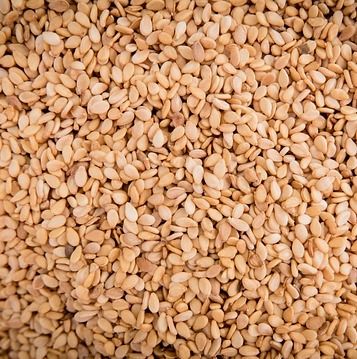News
Article
Study with Large Sesame Allergic Population Further Endorses Current Effective Dose Determination Methods
Author(s):
This analysis on a larger study population led to results which add useful data to the growing literature on sesame thresholds and may even help to assess sesame safe doses used in risk management.

New findings further support the effectiveness of current research in assessing reaction thresholds for allergenic foods, as well as the modern methods for effective dose determination as appropriate for determining safety precautions for the food industry.1
These findings were part of research conducted to expand upon existing data regarding population doses to sesame, given that sesame is a major allergen which can lead to severe or fatal reactions. The food is increasingly prevalent in Western diets, with the food requiring labeling in both the US and EU, but larger population data was seen as important.2
To expand upon this research, this new study was conducted and it was authored by Arnon Elizur, from the Institute of Allergy, Immunology and Pediatric Pulmonology at Yitzhak Shamir Medical Center in Israel.
“The current study aims to provide information regarding reaction thresholds to sesame in the largest population studied thus far with no left or right censors, and to verify the results using a safe-dose challenge,” Elizur and colleagues wrote.
Background and Findings
The research team’s analysis was conducted retrospectively and took information from previous studies and clinical practice databases. The research was based on sesame oral food challenges (OFCs) which had been crafted to analyze reaction thresholds.
The investigators included data in their study on individuals who had undergone sesame OFCs while at the Institute of Allergy, Immunology, and Pediatric Pulmonology at the Shamir Medical Center in Israel. The OFCs used in the study included diagnostic ones—for uncertain allergic history or no reaction within the last year—as well as OFCs for identification of sesame oral immunotherapy (OIT) thresholds.
The research took place over the course of November of 2011 through July of 2021 and the team gathered data from 7 sites. Patients in the age range of 20 and older with or without PsA, who had psoriasis vulgaris, who were either being given or had received secukinumab treatment were considered by the team.
The investigators noted that high Skin Prick Tests (SPT) wheal size alone was not what served as sufficient diagnostic criteria for their research into sesame allergy. The team’s diagnostic-OFC protocol used a single day with incremental doses and then gradually increasing intervals.
The following days of OFC assessed the highest tolerated doses of patients. These individuals were evaluated by the investigators comprehensively for data on their medical history, prior reactions, whether they underwent SPT, and spirometry for patients aged ≥5 years.
The research team determined that only those ≥3.7 years old were shown to be eligible for sesame-OIT, and there was no age limitation for diagnostic OFC. The safety and eligibility criteria for OIT of these patients were strictly followed.
Overall, the investigators ended up with 250 individuals’ data from 338 positive OFCs, and then an additional 158 OFCs had been done with safe doses. The team’s estimated amounts of discrete and cumulative protein necessary for inducing an objective reaction in 1% (ED01) of the entire group of individuals were found to be 0.8 mg (with a range of 0.3 – 6.3 mg) and 0.7 mg (ranging from 0.1 – 7.1 mg), respectively.
Correspondingly, the research team reported that the levels for 5% of the population (ED05) were shown to be 3.4 mg (ranging from 1.2 – 20.6 mg) and 4.5 mg (with a range of 1.2 – 28.8 mg). The team’s conducted safe-dose OFCs yielded similar ED01 (0.8 mg, ranging from 0.4 – 7.5 mg) and ED05 (3.4 mg, ranging from 1.2 – 22.9 mg) values.
Though they found that oral pruritus was shown to be triggered in 11.6% of individuals by doses equal to or below 1 mg of sesame protein, they could find no objective reactions at this dosage in any of the challenges, and this included safe-dose OFCs.
“These results provide additional support regarding the effectiveness of current research methods in the evaluation of reaction thresholds for allergenic foods, as well as important data for the risk assessment and risk management of sesame within food business operations,” they wrote.
References
- Nachshon, L, Westerhout, J, Blom, WM, et al. Sesame eliciting and safe doses in a large sesame allergic population. Allergy. 2023; 00: 1-9. doi:10.1111/all.15863.
- Allen KJ, Turner PJ, Pawankar R, et al. Precautionary labelling of foods for allergen content: are we ready for a global framework? World Allergy Organ J. 2014; 7: 1-14.




